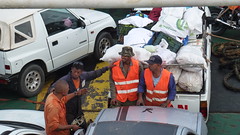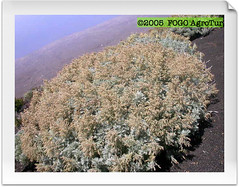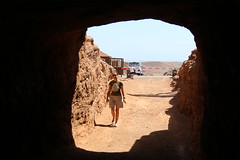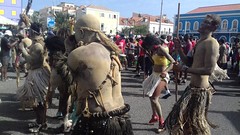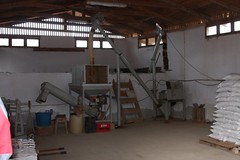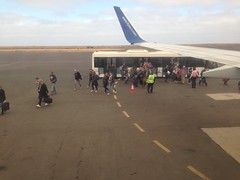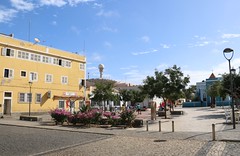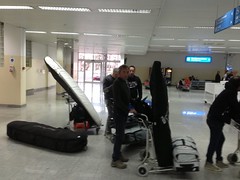 Cape Verde
Cape Verde
Cape Verde (English: /ˈvd(i)/) or Cabo Verde (English: /ˌkb_ˈvd/, English: /ˌkæb-/; Portuguese: [ˈkaβu ˈveɾðɨ]), officially the Republic of Cabo Verde, is an archipelago and island country in the central Atlantic Ocean, consisting of ten volcanic islands with a combined land area of about . These islands lie between west of Cap-Vert, the westernmost point of continental Africa. The Cape Verde islands form part of the Macaronesia ecoregion, along with the Azores, the Canary Islands, Madeira, and the Savage Isles.
The Cape Verde archipelago was uninhabited until the 15th century, when Portuguese explorers discovered and colonized the islands, thus establishing the first European settlement in the tropics. Because the Cape Verde islands were located in a convenient location to play a role in the Atlantic slave trade, Cape Verde became economically prosperous during the 16th and 17th centuries, attracting merchants, privateers, and pirates. It declined economically in the 19th century after the suppression of the Atlantic slave trade, and many of its inhabitants emigrated during that period. However, Cape Verde gradually recovered economically by becoming an important commercial center and useful stopover point along major shipping routes. In 1951, Cape Verde was incorporated as an overseas department of Portugal, but its inhabitants continued to campaign for independence, which they achieved in 1975.
Since the early 1990s, Cape Verde has been a stable representative democracy and has remained one of the most developed and democratic countries in Africa. Lacking natural resources, its developing economy is mostly service-oriented, with a growing focus on tourism and foreign investment. Its population of around 483,628 is mostly of mixed African and European heritage, and predominantly Roman Catholic, reflecting the legacy of Portuguese rule. A sizeable Cape Verdean diaspora community exists across the world, especially in the United States and Portugal, considerably outnumbering the inhabitants on the islands. Cape Verde is a member state of the African Union.
Cape Verde's official language is Portuguese. It is the language of instruction and government. It is also used in newspapers, television, and radio. The recognized national language is Cape Verdean Creole, which is spoken by the vast majority of the population.
As of the 2021 census the most populated islands were Santiago where the capital Praia is located (269,370), São Vicente (74,016), Santo Antão (36,632), Fogo (33,519) and Sal (33,347). The biggest cities are Praia (137,868), Mindelo (69,013), Espargos (24,500) and Assomada (21,297).
Etymology
The country is named after the Cap-Vert peninsula, on the Senegalese coast. The name Cap-Vert, in turn, comes from the Portuguese language ('green cape'), the name that Portuguese explorers gave the cape in 1444, a few years before they came across the islands.
On 24 October 2013, the country's delegation to the United Nations informed it that other countries should no longer use Cape Verde or any other translations of Cabo Verde as part of its official name: all countries should use Republic of Cabo Verde as the country's official name. Speakers of English have used the name Cape Verde for the archipelago and, since independence in 1975, for the country. In 2013, the Cape Verdean government determined that it would thenceforth use the Portuguese name for official purposes, including at the United Nations, even when speaking or writing in English.
History
The archipelago of modern-day Cape Verde was formed approximately 40–50 million years ago during the Eocene era.
Before the arrival of Europeans, the Cape Verde Islands were uninhabited. They were discovered by Genoese and Portuguese navigators around 1456. According to Portuguese official records, the first discoveries were made by Genoa-born António de Noli, who was afterwards appointed governor of Cape Verde by the Portuguese king Afonso V. Other navigators mentioned as contributing to discoveries on the Cape Verde archipelago are Diogo Dias, Diogo Afonso, Venetian Alvise Cadamosto, and Diogo Gomes (who had accompanied António de Noli on his voyage of discovery, and who claimed to have been the first to land on the Cape Verdean island of Santiago, and the first to name that island).
In 1462, Portuguese settlers arrived at Santiago and founded a settlement they called Ribeira Grande. Today it is called Cidade Velha ("Old City"), to distinguish it from a town of the same name on a different Cape Verdean island (Ribeira Grande on the island of Santo Antão). The original Ribeira Grande was the first permanent European settlement in the tropics.
In the 16th century, the archipelago prospered from the Atlantic slave trade. Pirates occasionally attacked the Portuguese settlements. Francis Drake, an English privateer, twice sacked the (then) capital Ribeira Grande in 1585 when it was a part of the Iberian Union. After a French attack in 1712, the town declined in importance relative to nearby Praia, which became the capital in 1770.
The decline in the slave trade in the 19th century resulted in an economic crisis. Cape Verde's early prosperity slowly vanished. However, the islands' position astride mid-Atlantic shipping lanes made Cape Verde an ideal location for re-supplying ships. Because of its excellent harbour, the city of Mindelo, located on the island of São Vicente, became an important commercial centre during the 19th century. Diplomat Edmund Roberts visited Cape Verde in 1832. Cape Verde was the first stop of Charles Darwin's voyage with in 1832.
With few natural resources and inadequate sustainable investment from the Portuguese, the citizens grew increasingly discontented with the colonial masters, who refused to provide the local authorities with more autonomy. In 1951, Portugal changed Cape Verde's status from a colony to an overseas province in an attempt to blunt growing nationalism.
In 1956, Amílcar Cabral and a group of fellow Cape Verdeans and Guineans organized (in Portuguese Guinea) the clandestine African Party for the Independence of Guinea and Cape Verde (PAIGC). It demanded improvement in economic, social and political conditions in Cape Verde and Portuguese Guinea and formed the basis of the two nations' independence movement. Moving its headquarters to Conakry, Guinea in 1960, the PAIGC began an armed rebellion against Portugal in 1961. Acts of sabotage eventually grew into a war in Portuguese Guinea that pitted 10,000 Soviet Bloc-supported PAIGC soldiers against 35,000 Portuguese and African troops.
By 1972, the PAIGC controlled much of Portuguese Guinea despite the presence of the Portuguese troops, but the organization did not attempt to disrupt Portuguese control in Cape Verde. Portuguese Guinea declared independence in 1973 and was granted de jure independence in 1974. A budding independence movement – originally led by Amílcar Cabral, assassinated in 1973 – passed on to his half-brother Luís Cabral and culminated in independence for the archipelago in 1975.
Independence (1975)
Following the April 1974 revolution in Portugal, the PAIGC became an active political movement in Cape Verde. In December 1974, the PAIGC and Portugal signed an agreement providing for a transitional government composed of Portuguese and Cape Verdeans. On 30 June 1975, Cape Verdeans elected a National Assembly which received the instruments of independence from Portugal on 5 July 1975. In the late 1970s and 1980s, most African countries prohibited South African Airways from overflights but Cape Verde allowed them and became a centre of activity for the airline's flights to Europe and the United States.
Immediately following the November 1980 coup in Guinea-Bissau, relations between Cape Verde and Guinea-Bissau became strained. Cape Verde abandoned its hope for unity with Guinea-Bissau and formed the African Party for the Independence of Cape Verde (PAICV). Problems have since been resolved and relations between the countries are good. The PAICV and its predecessor established a one-party system and ruled Cape Verde from independence until 1990.
Responding to growing pressure for pluralistic democracy, the PAICV called an emergency congress in February 1990 to discuss proposed constitutional changes to end one-party rule. Opposition groups came together to form the Movement for Democracy (MpD) in Praia in April 1990. Together, they campaigned for the right to contest the presidential election scheduled for December 1990.
The one-party state was abolished on 28 September 1990, and the first multi-party elections were held in January 1991. The MpD won a majority of the seats in the National Assembly, and MpD presidential candidate António Mascarenhas Monteiro defeated the PAICV's candidate with 73.5% of the votes. Legislative elections in December 1995 increased the MpD majority in the National Assembly. The party won 50 of the National Assembly's 72 seats.
A February 1996 presidential election returned President Monteiro to office. Legislative elections in January 2001 returned power to the PAICV, with the PAICV holding 40 of the National Assembly seats, MpD 30, and Party for Democratic Convergence (PCD) and Labour and Solidarity Party (PTS) 1 each. In February 2001, the PAICV-supported presidential candidate Pedro Pires defeated former MpD leader Carlos Veiga by only 13 votes. President Pedro Pires was narrowly re-elected in 2006 elections.
President Jorge Carlos Fonseca led the country since 2011 Cape Verde presidential election and he was re-elected in the 2016 election. He was supported by the Movement for Democracy Party. MpD also won in the 2016 parliamentary elections, taking back parliamentary majority after 15 year-rule of African Party for the Independence of Cape Verde (PAICV). In April 2021, the ruling center-right Movement for Democracy (MpD) of Prime Minister Ulisses Correia e Silva won the parliamentary election.
On 26 August 2021, Cape Verde became t…
Looking for places related to Cape Verde?
Those are other destinations to find places related to Cape Verde:

